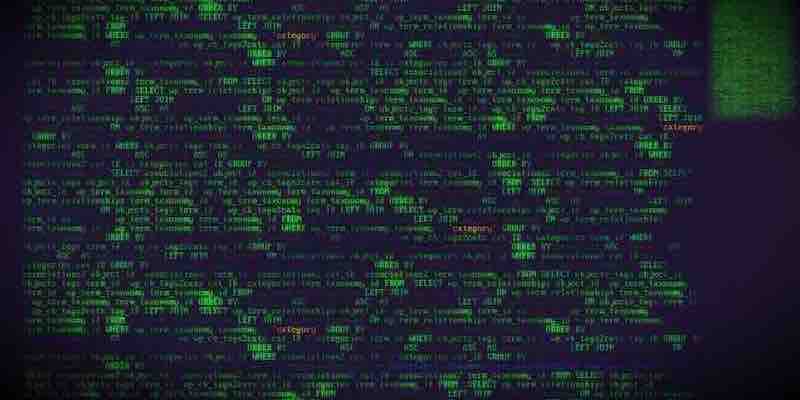Decoding the Days: A Deep Dive into Calendar Algorithms and Getting the Day of the Week
Associated Articles: Decoding the Days: A Deep Dive into Calendar Algorithms and Getting the Day of the Week
Introduction
With enthusiasm, let’s navigate by way of the intriguing subject associated to Decoding the Days: A Deep Dive into Calendar Algorithms and Getting the Day of the Week. Let’s weave fascinating data and provide recent views to the readers.
Desk of Content material
Decoding the Days: A Deep Dive into Calendar Algorithms and Getting the Day of the Week

The seemingly easy activity of figuring out the day of the week for a given date hides a surprisingly wealthy historical past and an enchanting array of algorithmic approaches. From historic calendar techniques to fashionable computational strategies, the search to precisely pinpoint the day has pushed innovation and mathematical exploration. This text delves into the intricacies of calculating the day of the week, exploring varied algorithms, their underlying rules, and their sensible purposes.
The Basis: Modular Arithmetic and the Zeller’s Congruence
On the coronary heart of most day-of-the-week algorithms lies modular arithmetic, particularly modulo 7. Since per week consists of seven days, we’re solely within the the rest when the full variety of days since a reference date is split by 7. This the rest straight corresponds to the day of the week, with 0 usually representing Sunday, 1 representing Monday, and so forth.
One of the crucial well-known and stylish algorithms is Zeller’s congruence. Developed by Christian Zeller in 1882, this system gives a concise technique for calculating the day of the week for any Gregorian calendar date. The system is:
h = (q + [(13(m+1))/5] + Okay + [K/4] + [J/4] - 2J) mod 7
The place:
-
his the day of the week (0 = Saturday, 1 = Sunday, 2 = Monday, …, 6 = Friday) -
qis the day of the month -
mis the month (3 = March, 4 = April, …, 12 = December; January and February are counted as months 13 and 14 of the earlier yr) -
Okayis the yr of the century (yr % 100) -
Jis the zero-based century (yr / 100)
The sq. brackets [] denote the ground perform (rounding all the way down to the closest integer). The system cleverly accounts for the various lengths of months and the intercalary year guidelines of the Gregorian calendar.
Whereas seemingly complicated, Zeller’s congruence is remarkably environment friendly and correct. Its mathematical magnificence stems from its potential to condense the intricate guidelines of the Gregorian calendar right into a single, compact equation. Nevertheless, its reliance on integer division and the ground perform can introduce slight computational overhead in comparison with some extra fashionable approaches.
Various Approaches: Variations and Optimizations
Whereas Zeller’s congruence stays a well-liked selection, a number of various algorithms exist, every with its personal strengths and weaknesses. Some give attention to optimizing for particular computational environments, whereas others provide improved readability or decreased complexity.
One widespread optimization entails pre-calculating values to scale back the variety of computations required. As an illustration, the values for [(13(m+1))/5] may be saved in a lookup desk, eliminating the necessity for repeated calculations. This method is especially helpful in resource-constrained environments or when performing numerous day-of-the-week calculations.
One other method entails utilizing a extra iterative technique, increase the full variety of days since a reference date by incrementing by way of years, months, and days. This technique may be simpler to know and implement, particularly for programmers much less conversant in modular arithmetic. Nevertheless, it may be much less environment friendly than Zeller’s congruence for single calculations.
Past the Algorithm: Sensible Functions and Issues
The power to find out the day of the week has quite a few sensible purposes throughout varied fields:
- Calendar purposes: Fashionable calendar software program depends closely on these algorithms to show the proper day for any given date.
- Historic analysis: Figuring out the day of the week for previous occasions is essential for historic accuracy and evaluation.
- Monetary techniques: Many monetary calculations, notably these involving curiosity accrual, rely upon correct day-of-the-week willpower.
- Scheduling and logistics: Optimizing schedules and logistics usually requires contemplating the day of the week for planning functions.
- Information evaluation: In knowledge evaluation, understanding the day of the week can reveal patterns and developments in time-series knowledge.
Nevertheless, it is essential to contemplate the restrictions of those algorithms:
- Calendar system: Most algorithms are particularly designed for the Gregorian calendar, which is essentially the most extensively used calendar system at present. Making use of these algorithms to different calendar techniques (Julian, for instance) requires changes or completely different algorithms altogether.
- Date accuracy: The accuracy of the calculation depends upon the accuracy of the enter date. Incorrect enter will inevitably result in incorrect outcomes.
- Leap years: The algorithms should precisely account for leap years, which generally is a supply of errors if not dealt with accurately. The Gregorian intercalary year guidelines are complicated and require cautious implementation.
Programming Implementations: Examples in Python and JavaScript
The algorithms mentioned may be readily carried out in varied programming languages. Beneath are examples in Python and JavaScript, illustrating the implementation of Zeller’s congruence:
Python:
import math
def day_of_week(yr, month, day):
"""Calculates the day of the week utilizing Zeller's congruence."""
if month == 1 or month == 2:
month += 12
yr -= 1
q = day
m = month
Okay = yr % 100
J = math.ground(yr / 100)
h = (q + math.ground(13 * (m + 1) / 5) + Okay + math.ground(Okay / 4) + math.ground(J / 4) - 2 * J) % 7
days = ["Saturday", "Sunday", "Monday", "Tuesday", "Wednesday", "Thursday", "Friday"]
return days[h]
# Instance utilization
yr = 2024
month = 10
day = 26
print(f"The day of the week for month/day/yr is: day_of_week(yr, month, day)")JavaScript:
perform dayOfWeek(yr, month, day)
if (month === 1
// Instance utilization
const yr = 2024;
const month = 10;
const day = 26;
console.log(`The day of the week for $month/$day/$yr is: $dayOfWeek(yr, month, day)`);These examples display the simple implementation of Zeller’s congruence. The code is concise and readily adaptable to numerous programming contexts.
Conclusion:
Figuring out the day of the week for a given date is a seemingly easy activity with a surprisingly wealthy mathematical basis. Algorithms like Zeller’s congruence present environment friendly and correct strategies for this calculation, whereas various approaches provide variations tailor-made to particular wants. Understanding these algorithms and their purposes is essential throughout varied fields, highlighting the enduring relevance of this seemingly fundamental computational downside. From historic analysis to fashionable software program growth, the power to precisely decode the times of the week continues to be a basic instrument in our understanding and manipulation of time.








Closure
Thus, we hope this text has supplied invaluable insights into Decoding the Days: A Deep Dive into Calendar Algorithms and Getting the Day of the Week. We hope you discover this text informative and helpful. See you in our subsequent article!